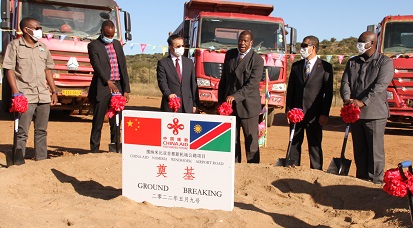
City cracks whip on water crisis
After September 2016, the City of Windhoek and Namwater will only be able to supply about 50% of the required water demand and impose a heavy fine to both businesses and households that over consume.
This according to the City of Windhoek, Water Demand technician, Dieter Tolke, speaking this week at a public dialogue on combining water saving efforts for 2016 and beyond.
At the Dialogue organised by the Hanns Sediel Foundation, Tolke said that only 1.5% of water inflow has been received from rainfall into the city’s reservoirs. “Only drinking water might become available” and that the city is currently considering an over consumption tariff of water for business and households of up to a N$1000 per cubic meter.
Government together with NamWater has urged Windhoek residents to use at least 15% less water than what they normally use, and have put some restrictions in place like encouraging people not to use hose pipes to wash cars or driveways.
If these savings are achieved, then the current dam levels should be sufficient until early 2017. But the likelihood of getting anywhere close to achieving this 15% saving, appears slim.
The City will have to impose a 25% water saving requirement because of already failed measures to save 15% and in the worst case scenario this will be increased to a mandatory 30%.
City of Windhoek spokesperson, Joshua Amukugo, said at the same event that current staff do not have the utmost capability and that residents as always will have to read their own meters.
The current water tariff of supplying water will not be changed, Tolke said. Adding that “Namibia is the driest country in Southern Africa but yet data shows that we waste the most water.”
According to a Simonis Storm Securities report on the economic effects of water shortage in the central area. It is difficult to pinpoint the exact economic impact of water shortages, but a cut back in manufacturing and construction activities which together contribute about 18% to GDP will negatively affect the wider economy, job security and future investment.
According to Namwater, the total annual water demand in the central region is approximately 31 million cubic meters of which 25.6 million cubic meters is used in Windhoek.
Apart from the bulk supply from Namwater, the City of Windhoek has two additional water sources; one being the reclamation plant and the second being the aquifer just south of the city.
A water shortage in this area is likely to have a significant impact on all businesses, not only water dependent and intensive industries. In a water shortage scenario, supply preference will be given to households. Public and essential services such as schools, hospitals, government, police and army will be second in line, while business, industry and construction will come last.
The International Research Institute for Climate and Society (IRI) have released their latest long range temperature and rainfall forecasts that expect a 70% chance of temperatures in Namibia to be hotter than normal, and a 40% to 45% chance of rainfall being below normal across most of Namibia.
The El-Nino phenomenon is a weather anomaly which occurs every 2 to 7 years, and results in the warming up of the equatorial region of the Pacific Ocean triggering a shift in wind patterns. The occurrence of this phenomenon tends to result in a poorer rain season for certain regions globally, including Namibia.
The UN is expecting this year’s El Nino to strengthen towards the end of 2015 and is on track to become the strongest in more than 50 years. This does not bode well for Namibia.












































